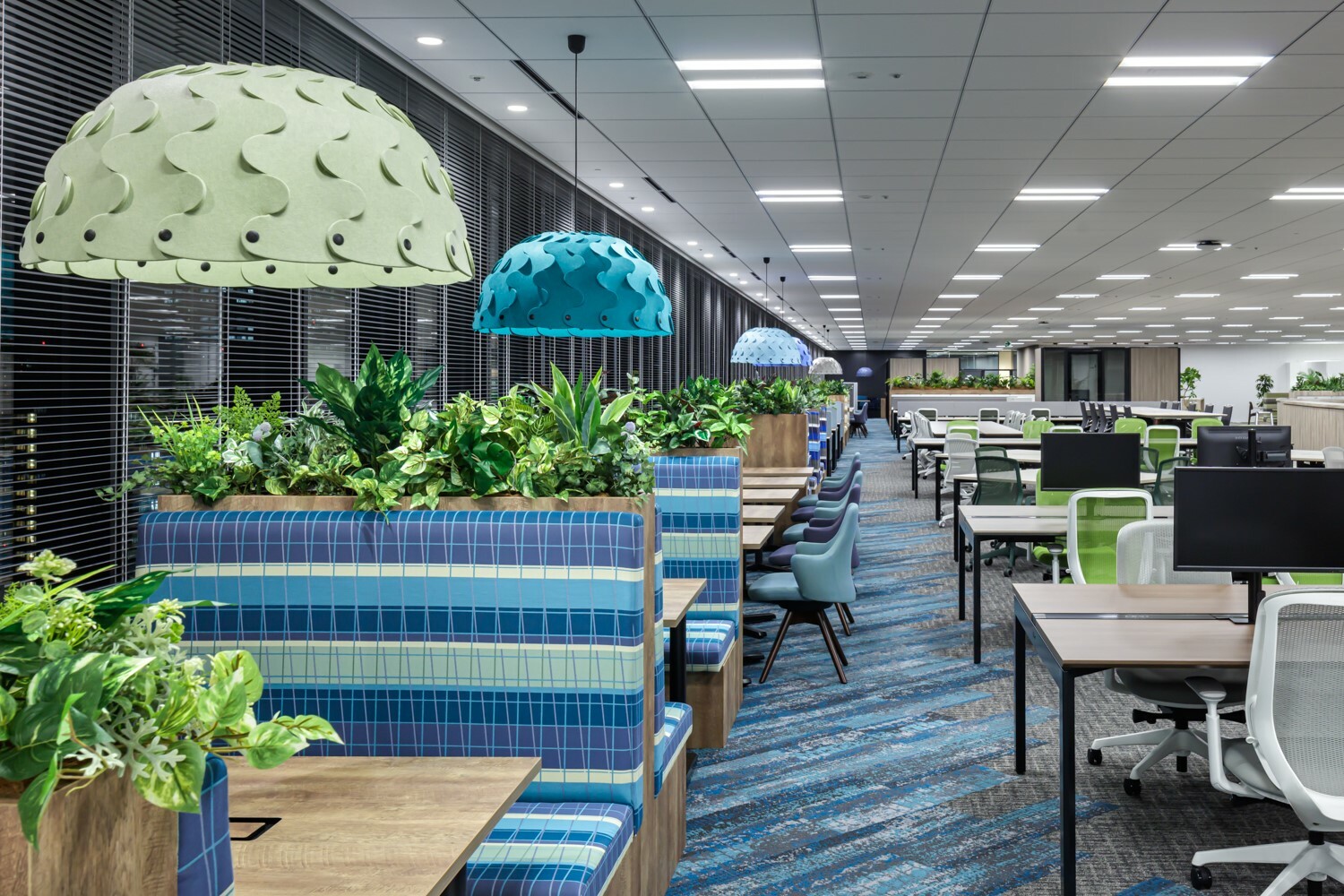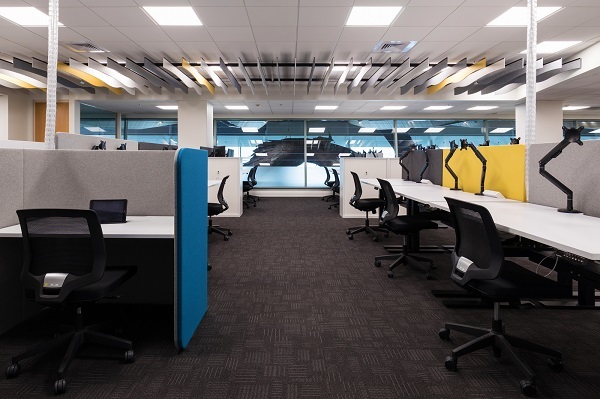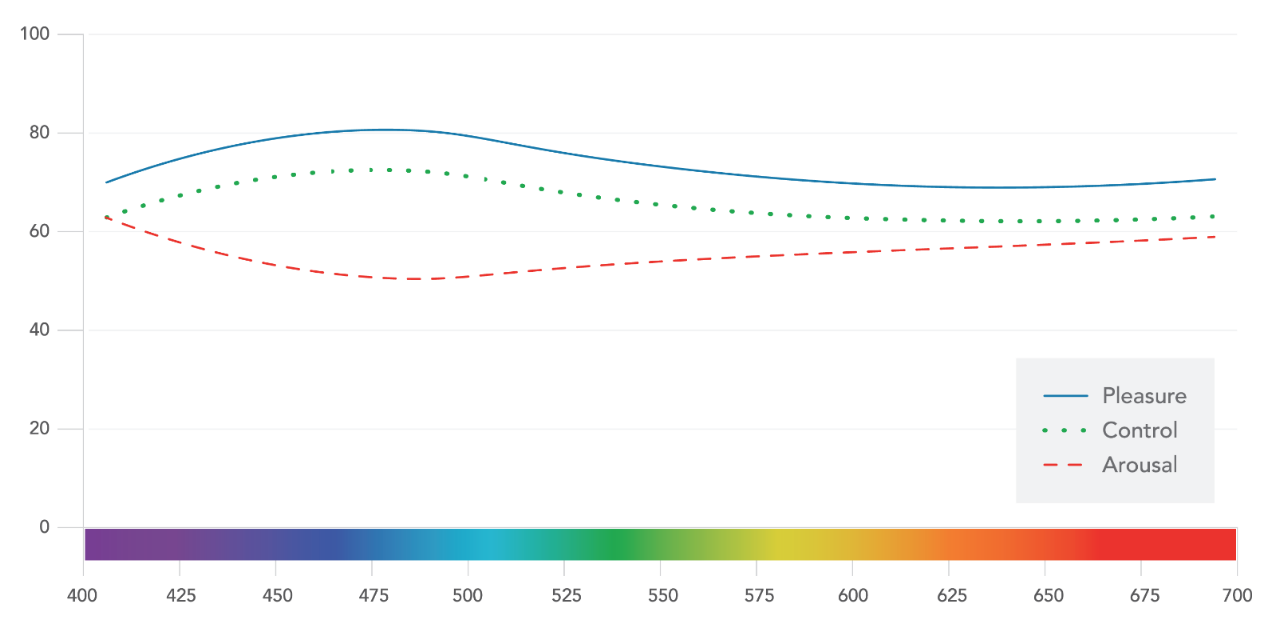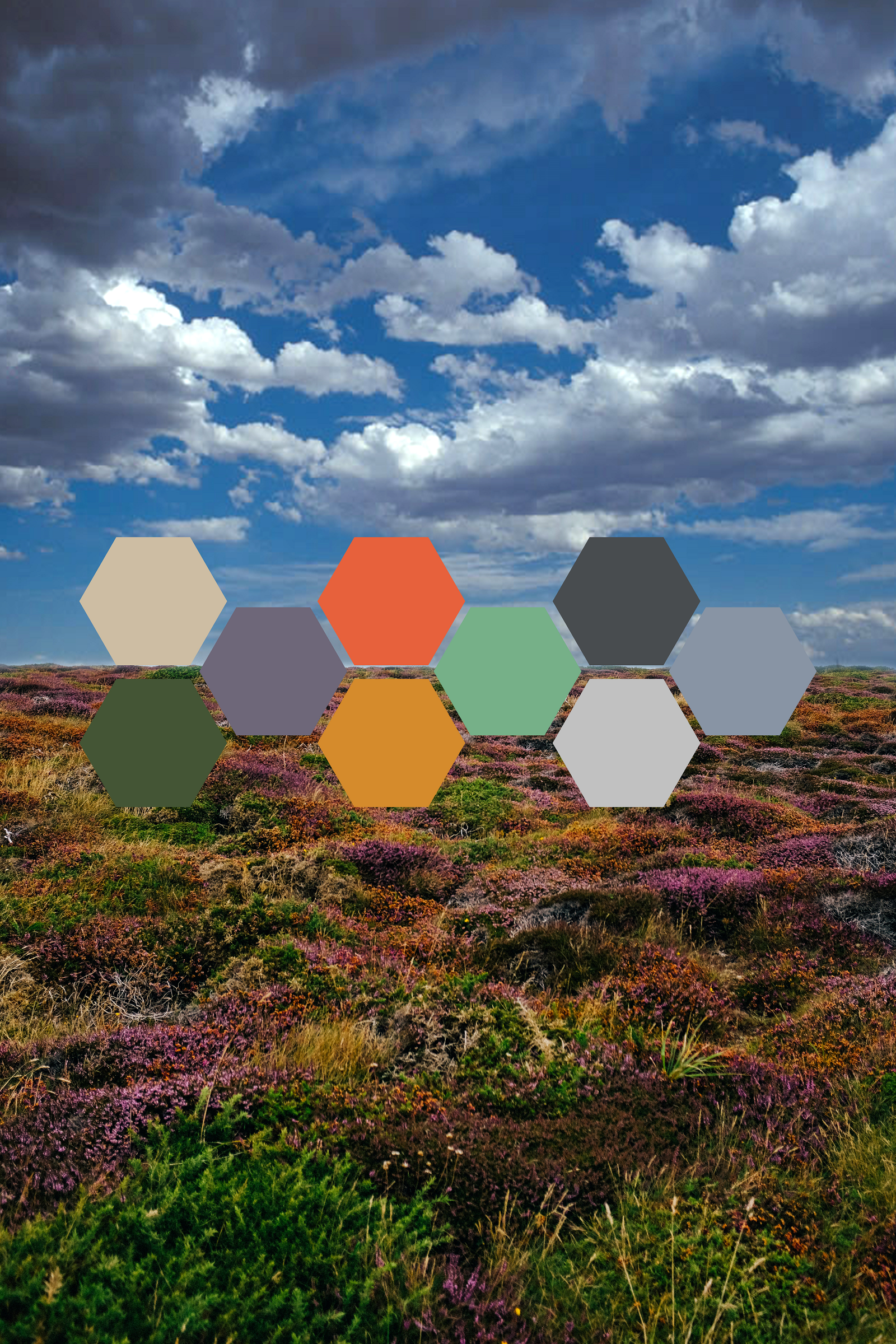The use of colour in the workplace is evolving. The design of any office or workspace should begin with the premise that a happy and comfortable employee is likely to be more creative and productive than those who are less content.
Secondly, as sight is our most sensitive and highly developed sense, it should be recognised that colour is a powerful stimulant and one, it has been proven, can directly affect our mood and thoughts.
It makes sense then, when designing or redesigning, colour in the workplace should be of prime consideration. But, knowing as we do that different colours can have different effects on people, the secondary consideration should be around how various areas of the workspace will be used and what sort of people will use them. A blanket colour scheme that has blue as its predominant shade is likely to help with productivity and aid quiet and relaxed workers, but if you need dynamism and creativity, then green with yellow, red or orange accents may be better suited: green for creativity and the warmer colours for stimulation.




